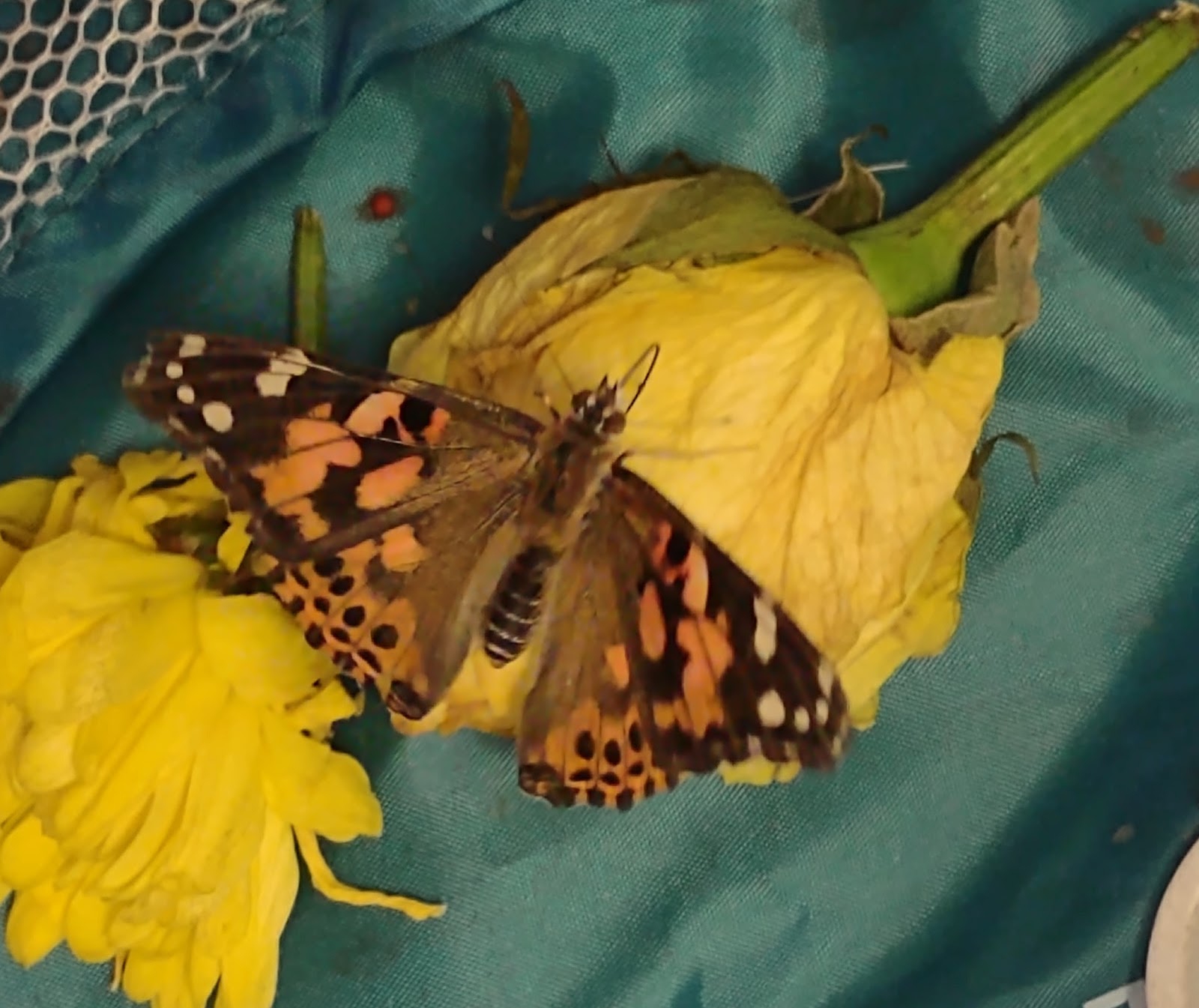The Need to "Eclose"
And my butterflies are here! See the pictures? Aren’t my babies pretty? I was planning to set them free this weekend, but it’s been too wet. Maybe later today. They seem anxious to get out and see the world, precious things.
I didn’t get to witness the wiggling chrysalises before their emergence this time. Side note: I’ve learned that the scientific term for that emergence is “eclosion”. That's a fun one for a wordie like me.
(Another side note: I have a friend who is inexplicably creeped out
by this adventure of mine. She got the heebie jeebies when I used that phrase
“wiggling chrysalises” and called me a bug breeder. As if a beautiful butterfly could actually qualify as a bug. And y’all, she’s a scientist, for
Pete’s sake. Yeesh . . .)
When we did the butterfly thing with my young
daughters, we saw a couple chrysalises wiggling. It was a cool thing. I was
sorry to have missed that moment this time around.
Nevertheless, I did see a couple of the butterflies pretty
freshly hatched. One sweet girl in particular troubled me a bit because her
wings weren’t lying flat like the others’ were, and she seemed to be struggling
to make them move right. She’s good now, fluttering about the cage with her
sisters. (For the record, they’re all sisters in my mind . . . even though I
believe I’ve seen some mating going on. I’m just living in denial about that.)
But I wish I’d witnessed their popping out so I could see if something was
different about the experience for that one.
I also noticed this time around that once they were free,
their wings seemed to get more and more color as they worked them. A bit of research taught me that they have to pump their wings to “inflate”
them, so they can be usable for flying – and so they come into their full
beauty.
That physical transformation from caterpillar to butterfly, which
happens while they are still rolled up in their tough old skin wrapper, seems
to be a mostly passive process for them. They don’t actively make the change happen; it just happens of its own accord. However . . . if they don’t
do the work of eclosion, the change is for naught. It requires effort on their
part for all the newness to get “activated”.
Of course, there’s a lesson here.
“Do not conform to the pattern of this world,” Paul told the
Romans, “but be transformed by the renewing of your mind.” That second
verb is in the passive voice, your English teacher will tell you. The
understood “you” that is the subject of the sentence is not doing the action –
it is being acted upon. You are not transforming; you are being transformed.
Yet, Paul also exhorted the Philippians to “work out [their]
salvation”. There is work that we are supposed to do. But it's not the work of the transforming – just the eclosing. Kicking the old self to the curb and
working the wings of the new self so they can fly.
This is the gospel, the good news of Easter. And for some of us who were raised in legalistic, judgmental churches, this is a more comforting version of that good news than we are used to.
So be comforted, dear friend, wiggling meekly in your now superfluous chrysalis. Ditch that old skin and awaken your new self. Jesus died to give you wings . . . you just need to stretch them and fly!






Comments
Post a Comment